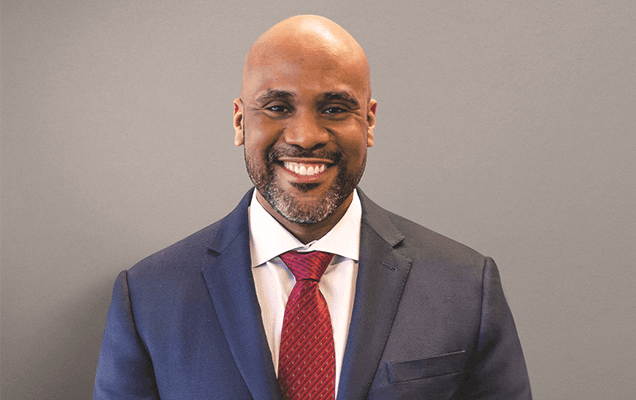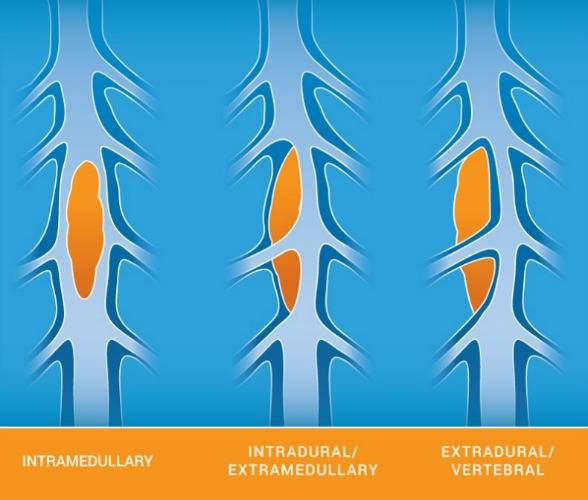Surgical removal is the primary treatment for spinal tumors. Recovery from spinal tumor surgery, however, can be just as important a step as the operation itself. By reading about what recovery from spinal tumor surgery is like, you can take steps to ensure that your return to an active, comfortable lifestyle goes quickly and smoothly.
Complete recovery from spinal tumor surgery will vary based on a number of factors. The most important of these is to what extent the tumor is causing a neurological problem, such as weakness or balance difficulties. The timetable for the improvement of preoperative neurological symptoms are unpredictable and can take many months. The recovery from the effects of the spinal tumor surgery itself is fairly standard and typically lasts about three to four weeks, no matter the type of tumor.
Types of Spinal Tumors
An important factor in determining the length of your recovery from spinal tumor surgery is the particular anatomic location of the tumor involved. Spinal tumor types are often categorized by their anatomic relationship to the spinal cord and to the dura mater, which is a thin membrane that contains the spinal cord, spinal nerves and spinal fluid. Tumors that exist outside of the dura mater are called extradural, whereas tumors that exist inside the dura mater are called intradural. Intradural tumors are defined further as to whether they exist inside of the spinal cord or outside of the spinal cord. Tumors inside the spinal cord are called intradural intramedullary; tumors outside the spinal cord are called intradural extramedullary.
Extradural Tumors
Extradural tumors exist outside the dura mater, and they are the most common kind. They usually come about as a result of cancer metastasis (cancer that spreads from other parts of the body), but they may also be primary bone tumors, meaning that they first form in the bone, or benign nerve sheath tumors. Surgery for these tumors depends on the kind of cancer they come from, and the kind of surgery depends on to what extent the tumor has affected to stability of the spine. Usually surgery for these tumors does not require opening the dura mater, but does entail a stabilization procedure with metallic implants (screws and rods). These surgeries can be large, requiring a substantial amount of time to recover from the effects of the surgery itself.
Intradural Tumors
Intradural tumors, on the other hand, exist inside the dura mater and are much less common. These tumors are usually primary, meaning they originate in or around the dura mater and are not the result of metastases. They usually do not affect the stability of the spine and surgery for these tumors usually does not require stabilization with metallic implants. As such, these surgeries are generally not large ones. For these tumors, the surgery and recovery are more greatly affected by the preoperative neurological status of the patient. If the patient has significant neurological problems prior to surgery, this will affect the length of recovery, even if the surgery itself is a small one. Another factor is whether the tumor is intramedullary (existing within the spinal cord). If the tumor is intramedullary, surgery entails opening up the spinal cord to remove the tumor. This usually affects sensation in the legs, requiring a degree of postoperative rehabilitation and recovery that a patient who has had surgery for an extramedullary tumor may avoid.
How Tumor Location Affects Recovery
Although recovery times are similar for each type of spinal tumor surgery, there are several noteworthy differences that influence the process.
Connection to the Spinal Cord
First, a tumor more deeply connected to the spinal cord, such as an intradural tumor, will generally cause a longer recovery.
Preoperative Deficits
Second, a tumor that causes more severe preoperative deficits, whether because of its size, location or rate of growth, will cause a longer recovery. Preoperative deficits include any type of neurological problems, weakness, numbness, or balance difficulty that exist prior to surgery and are caused by the tumor itself. For example, intramedullary tumors occur most often in the cervical spine, and they can cause neurological symptoms different from those caused by a tumor in a lower segment of the spine.
The part of the recovery process that is most influenced by tumor type is the restoration of preoperative neurological deficits. If your surgeon deems physical therapy necessary to restore the neurological deficits, it may take up to a year or two for a full recovery.
It's time to get back to doing what you love.
How Spinal Tumor Surgery Approach Affects Recovery
The surgeon’s approach to the operation, as well as the type of tumor involved, can significantly affect your recovery from spinal tumor surgery. Many spinal tumors can be removed using minimally invasive spine surgery techniques, which come with a series of benefits.
Minimally invasive spine surgery is an approach that minimizes the damage to the tissue surrounding the area of the operation in order to facilitate a faster recovery. It involves the use of dilation technology, which allows the surgeon to move tissue aside, rather than cut through it, to access the tumor.
The minimally invasive approach decreases the risk of infection and reduces postoperative hospital stays by a day on average. Furthermore, because the muscles surrounding the tumor undergo less trauma and damage, it’s possible to accelerate the recovery of your strength and motion.
Timeline of Recovery
There are several variables in spinal tumor surgery that can shift your recovery timeline, but the process is usually as follows.
Right after surgery, you will go to the recovery room, then onto your hospital room or and intensive care unit (ICU) where you will rest overnight. If you have had surgery for an intradural tumor, your surgeon will likely recommend a period of bedrest for a day or two to help with healing of the opening of the dura that was required to perform the surgery. If you have had surgery for an extradural tumor bedrest is not necessary. In either case, the goal will be to get you up and walking quickly.
The next step is to switch from intravenous pain medication to oral pain medication, after which you will begin gentle movement exercises with a nurse and a physical therapist. Once you have demonstrated the ability to eat, walk and use the restroom independently, which is typically at about three to five days after the operation, you will be discharged from the hospital. If you still need help with these activities of daily living, a stint in an in-patient rehabilitation facility may be needed.
For most intradural tumors, you can expect to recover from the effects of the operation itself after three to four weeks. A complete recovery, however, which consists of healing and therapy to recover from the neurological deficits caused by the tumor, can take a year or two in more severe cases. For metastatic tumors that require extensive stablization, the surgical recovery can be 3-6 months. For a more precise recovery timeline specific to your case, talk with a qualified surgeon about your condition.
Talk With Your Surgeon
Spinal tumor surgery and recovery can seem like a complicated process to understand, but by doing research and consulting with qualified medical professionals, you can become informed and feel more confident about your road ahead. Use this overview of spinal tumor surgery and recovery can help you form questions for your surgeon.

About Dr. Gaetan Moise
Dr. Gaetan Moise is an accomplished neurosurgeon in North Jersey and is a proud member of Neurosurgeons of New Jersey, practicing out of their Ridgewood office conveniently located on East Ridgewood Avenue. His compassionate evidence-based, results-driven approach is guided by his desire to help patients achieve happy, pain-free lives through non-surgical and appropriate surgical solutions. Dr. Moise’s techniques are influenced by the advancements in minimally invasive surgery technology as well as advances in the understanding of the intricacies of the nervous system, brain, and spinal cord. Dr. Moise is a member of The Congress of Neurological Surgeons and the American Association of Neurological Surgeons. He is accepting new patients.







